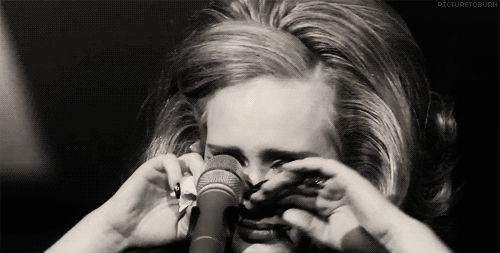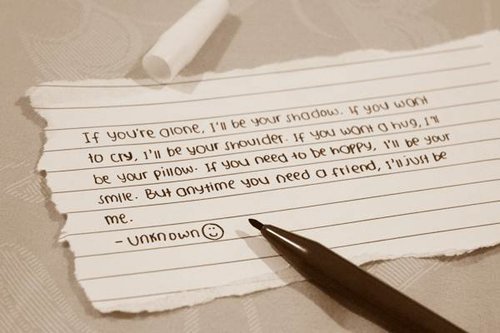#nowplaying If This Was a Movie by Taylor Swift
Hye assalam to all :)
I'm not going to tell ya 'bout how vanilla and choc affect your blood pressure. Nope. Ekceli takdew kaitan pown. (Duhhhhh, gedik okay?) Reverse reverse gostan. Actually tiada kaitan pun. (Hmmm much better..haha)
Just finished watch Vanilla Coklat kat TV3. Best lah jugak sebab parents dalam cerita tu kelakar and sempoi-sempoi semuanya. Haha. Macam tak percaya je ada mak yang main jelir lidah dengan anak dia masa husband dia tak pandang. Haha. So basically cerita ni pasal Zara and Amir (Ixara Aisya and Aiman Hakim), classmates kat college, baru 19 tahun, selalu bergaduh but then kena paksa kahwin. So far macam tu lah ceritanya, nak cerita lebih pun baru 2 episod disiarkan (kalau korang nak kejar mungkin sempat lagi, hehe). Korang mesti tertanya-tanya kan siapa Aiman Hakim? Aku pun mula-mula macam tu jugak.
"Pelakon baru ke? Tapi muka macam biasa tengok. Jiran aku ke ek?"
Dengan tiba-tiba je *mentol menyala* aku teringat siapa Aiman Hakim tu. Patutlah biasa tengok, rupanya dia one of peserta Mentor. Tapi tak ingat lah Mentor yang ke berapa. Kalau tak silap dia protege Rahim Maarof? Kot lah, kalau nak sure lagi silalah rajin-rajinkan diri Google. Terima la kasih.
Anyways, cerita pasal demam aku tu, lepas makan ubat semalam, nampaknya tak kebah, bahkan semakin teruk. (hahh bahasa macam buat karangan ni!) Paling teruk ialah allergic aku. Habis bengkak-bengkak muka, orang tengok pun dah tak kenal rupa dah. Part gatal tu yang tak tahan. Rasa nak menggaru je. Abah (which is my pak sedara) lari sekejap daripada office sebab nak bawa aku pergi klinik. Kesian Abah :( .
Lepas lebih kurang sejam menunggu giliran kat Klinik Kuala Telemung tu (biasalah klinik kerajaan, ramai orang) aku pun dipanggil lah masuk. MA (Medical Assistant) ataupun orang-orang kat sini panggil 'dressar' tu tanya lah bla bla bla, ambil temperature bla bla bla, dan measure aku punya blood pressure.
Okay, korang tau tak macam mana nak measure blood pressure dengan setepat-tepatnya? Kalau pakai machine tu kurang precise sikit orang kata. Yang paling precise adalah pakai sphygmomanometer dan stethoscope. Apekebendenya binatang sphygmomanometer dan stethoscope tu? Haaaa ni nak cerita, bukan binatang tau.
Steps on How to Check Your Blood Pressure with a Sphygmomanometer:
- Remove the cuff, stethoscope, pressure gauge, and bulb (also known as a "bladder") from the kit, taking care to untangle the various tubes.
- Sit down at a table or desk where you can easily rest your arm so that when you bend your elbow, your elbow is parallel to your heart. (Some experts recommend you use your left arm; others suggest you test both arms. But while you're first adjusting to self-testing, use the left arm if you're right-handed, or vice versa.)

- Bend the arm you're going to test.
- Wrap the cuff around your upper arm (upper middle arm), slipping the top part of the cuff through the metal bar that's attached to the cuff. If your shirt has long sleeves, roll them up first. You can put the cuff over very thin clothing. Most cuffs have Velcro, making it easy to keep the cuff in place.

- Make sure the cuff is snug, but not too tight -- if you cut off your circulation and become agitated, you're going to get an alarming blood pressure reading!

- Gently put the earpieces of the stethoscope in your ears. They should feel comfortable in your ears. If not, try holding the stethoscope out in front of you and slightly shifting the earpieces away from you.

- Place the wide head of the stethoscope (the diaphragm) entirely on your skin just above the elbow, on the inside of your now straightened arm; the brachial artery. Do not hold the head of the stethoscope with your thumb-your thumb has its own pulse and this will confuse you while you try to obtain a reading. A good method is to hold the chestpiece between your index and middle fingers with your fingertips in the vertical space between the diaphragm and bell. You will not normally hear a thumping until you have begun to inflate the cuff. To aid in finding this you can press two fingers (not your thumb) to the area where it should be and move around until you feel a pulse.
- If the pressure gauge is clipped to the cuff, unclip it and attach the clip to something sturdy, such as a hardcover book, that you can place on the table so you can watch it. It's important to keep the gauge anchored and stable. Make sure there is adequate light and you can see the needle and pressure markings well before you begin to test.
- Take the rubber bulb and tighten the valve at the base. Be sure to turn the valve all the way clockwise to shut it off so that air doesn't escape when you pump. DO NOT OVER-TIGHTEN THE VALVE. This is key, doing so will not allow you to release air from the cuff slowly enough at first. This is because you will twist it open too far and let out air too fast due to the force needed to open it. Only turn the valve closed until you feel it stop.
- Pump the bulb using slow but very steady pressure until the needle on the gauge is at about 20-30 points above your usual systolic (top) number. Now, gently turn the bulb's valve counter-clockwise slightly so that air is released slowly and steadily. Doing this yourself as you listen is a little tricky, you should release the valve with the hand on your cuff arm and hold the stethoscope with your free arm. The needle should ideally be moving down at a rate of two marks per second for accuracy.
- As you watch the needle fall back down the gauge, listen for a thumping sound (The clinical name for this is "Korotkoff sounds"). Keep your eyes on the gauge -- when you first hear thumping, you have your systolic number, which represents the greatest amount of pressure exerted on the artery walls as your heart pumps blood.

- Keep watching the gauge and listening to the beats. Eventually the hard thumping sound will turn into a "whooshing" sound (these are called the 4th Korotkoff sounds). These sounds are helpful to listen to because they tell you that you are close to your diastolic blood pressure. When the thumping fades to silence, you have your diastolic (bottom) number, the lowest amount of pressure.
- If you miss the exact measure of either number, it's perfectly acceptable to pump the cuff back up a little to catch it. Just don't do it too much (like more than twice) because that can affect accuracy. Switch to the other arm in that event and start again.

So, that is pretty much it. Copied directly from wikiHow :)
Sekarang nak cerita macam mana pokcik MA atau pokcik dressar tu measure blood pressure. Kalau refer pada step number 7,
Place the wide head of the stethoscope (the diaphragm) entirely on your skin just above the elbow, on the inside of your now straightened arm; the brachial artery.
Yang kelakarnya, pokcik tu letak diaphragm not entirely on my skin but entirely on my sweater. Dahlah sweater tu memang tebal giloss. Laju je dia measure pastu dia kata blood pressure aku okay 120/80 (120/80 is a normal blood preasure reading).
Aku bukanlah nak kata dia tipu ke apa. Maybe dia dah expert sebab measure beribu blood pressure hari-hari. Kan orang kata practice make perfect. Tapi kalau bagi kat aku suruh measure, berejam habis nak cari "Korotkoff sound" tu je. Memang soft gilaaa "Korotkoff sound" tu. Kalau nak tau, itu bunyi 'whooosh' darah mengalir dalam salur darah korang. So bayangkanlah betapa susahnya nak cari "Korotkoff sound" tu lebih-lebih lagi kalau dpisahkan dengan lapisan pakaian yang tebal. But again, kalau dah biasa, mungkin tak jadi masalah kan?
Teringat zaman belajar measure blood pressure masa pre-medical year dulu. Tak puas rasanya. Nak belajar lagi! :)
PS: Kena cucuk tadi. Sakit jugak rupanya, dah lama tak kena cucuk. Nasib baik tak takut jarum. Nak jadi doctor mana boleh takut jarum. Buat malu je. Haha
PSS: Biasanya kalau demam, blood pressure aku naik. Pernah dulu naik sampai 180/100. Nak nangis dah aku sebab cuak. -,-'
#nowplaying Cerita Hati by Hafiz Hamidun


































